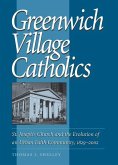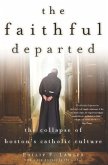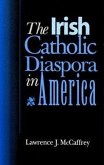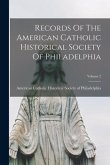Since the early days of the Republic, Washington has nurtured an increasingly prosperous and articulate community of black Catholics. For much of that time the spiritual welfare of these citizens as well as their material aspirations centered on St. Augustine's parish. From the days of Civil War, through the decades when Jim Crow ruled Washington, to recent times and new challenges for the inner city, black Catholics from all over the area have worshipped regularly at St. Augustine's. Popularly called "The Mother Church of Black Catholics, " it provides a beacon of hope for its parishioners, and its history offers a unique lens through which to view the emergence of an important Washington community. Morris J. MacGregor traces the history of St. Augustine's from its beginning as a modest chapel and school to its recent years as one of the city's most imposing and active churches. For more than a century, the congregation has counted among its members many of the intellectual and social elite of black society as well as impoverished newcomers struggling with the perils of urban life. This socially diverse membership, enhanced by a constant stream of visitors of all races and classes drawn by the beauty of the church and the artistry of its musicians, has made St. Augustine's an exemplar of Christian brotherhood. The book presents in considerable detail the history of race relations in church and state since the founding of the Federal City. Parish lay leaders have long been crusaders in the fight for racial justice; they have played important roles in the Congress of Colored Catholics, the Federation of Colored Catholics, the Catholic Interracial Council, and the NAACP. MacGregordiscusses these groups as well as more recent urban institutions such as the vibrant 14th and U Streets Coalition. The religious, racial, and social insights uncovered in this fascinating history make it a valuable resource for the study of American social and church history.
Hinweis: Dieser Artikel kann nur an eine deutsche Lieferadresse ausgeliefert werden.
Hinweis: Dieser Artikel kann nur an eine deutsche Lieferadresse ausgeliefert werden.








